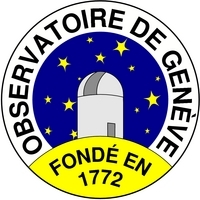
| INTEGRALPlanckGaiaPOLARCHEOPSEuclidATHENA |
| HEAVENSFACTCTALOFTSPICAJEM-EUSOXIPEeXTPTheseus |
| XRISMMAGBOUNDSMARTNet |
| ISDCCDCI |
| Data Centre for Astrophysics Astronomy Department of the University of Geneva |
| ISDC Seminar |
Chris Done
University of Durham, UK
Accreting black holes
Abstract. Accretion flows light up the regions of extremely curved spacetime around black holes, transforming the darkest objects in the Universe to the brightest. Astrophysical black holes come in two distinct size scales, with supermassive black holes powering the distant quasars, shaping galaxy formation and the growth of structure in the early Universe, while stellar mass black holes form in the last stages of stellar evolution of massive stars. While there is a large range of mass (and presumably spin) in the AGN, the stellar mass binaries form a remarkably homogeneous set so provide a perfect laboratories for studying black hole accretion flows. Yet the properties of the accretion flow should be fairly scale invariant, so what we learn about accretion flows from stellar mass systems should also be applicable to the supermassive black holes. I will review recent progress in understanding Galactic binary systems, in particular how the bewildering variety of spectral, timing and jet properties - the so called 'spectral states' - can be explained by changing the nature (and hence geometry) of the accretion flow, and then discuss how these apply to AGN.
>> Notice
>> List of ISDC seminars







